
There are a lot of real estate investing strategies available for you to choose from. It’s good to know what’s available. To help, we compiled this list of 98 of the best real estate investing strategies you should pay attention to.
Of course, you don’t want to use all of them. You can, however, combine some of them. For example, “Buy, Rent and Hoid” could be combined with “Seller Financing” or “Subject-To”. Also, some of these strategies are sub-strategies of other strategies.
We’ve broken up the list into categories …
1. CORE REAL ESTATE INVESTING STRATEGIES
1. Buy, Rent, and Hold Real Estate Investing

The buy, rent, and hold strategy in real estate involves buying a property to rent out and keeping it for a while to make money without actively working. This approach aims to generate income and increase the property’s value over time.
Pros
Investors love the buy, rent, and hold strategy. It provides a steady rental income, tax benefits, and property value appreciation over time. It’s also a reliable source of income that can balance out other investment risks or market fluctuations.
Cons
Before buying a property, it’s important to do your research. There are risks involved such as vacancies, property damage, and maintenance issues. You may also face legal or regulatory challenges. To minimize these risks, carefully examine the property and the market. It’s also helpful to work with experienced property managers who can assist you in managing the property.
2. Fix and Flip Real Estate Investing

Fix and flip investing is a great way to make money in real estate. It involves buying a property that needs work, fixing it up, and selling it for more money. This is a popular strategy for investors who want to make money fast.
The fix and flip strategy has a few important steps. First, find a property that needs work and is priced lower than usual. Then, get money to buy and fix it up. Next, make the necessary repairs to make the property more valuable. Finally, sell the property for a profit.
Pros
Fix and Flip investing offers the opportunity for fast profits, control over the renovation process to increase property value, and the chance to establish a successful reputation as an investor.
Cons
Renovating a property can come with unexpected costs, delays, and the risk of not selling for the desired price.
3. Wholesale Real Estate Investing

Wholesale investing is an easy way to make money in real estate. You find properties for a lower price than what they’re worth fixed up, then you assign them to other people for a fee. You don’t have to fix up the properties before selling them. The key is to find good deals and assign them quickly for profit.
To be successful in wholesale investing, you need to have a good network of contacts in the real estate industry, such as agents, investors, and other wholesalers. You also need to be able to find undervalued or distressed properties and negotiate a lower price with the seller. After you have the property under contract, you’ll market it to potential buyers and try to sell it for a profit before the closing date.
Pros
The possibility of making fast money and earning income with no money or without committing to long-term management or financial obligations.
Cons
There are three types of problems when wholesaling a property: legal or regulatory issues, difficulty finding a buyer, and disagreements with the seller or others involved in the sale.
4. Lease Option Real Estate Investing

Lease option investing is a way to invest in real estate by leasing a property and having the option to buy it later. This is a popular strategy for investors who don’t want to pay the full price right away.
A lease option is when an investor rents a property from the owner for 1-3 years and can buy it at the end of the lease. The investor pays a fee upfront, which is a percentage of the purchase price, to secure the option to buy. They also make regular lease payments and may have to do maintenance and repairs.
If the investor wants to buy the property after the lease ends, they can use the option fee as a credit towards the purchase price. If they don’t want to buy it, they can just leave at the end of the lease.
Pros
Benefits of leasing a property include:
– Not having to pay the full purchase price upfront
– The possibility of the property’s value increasing during the lease term
– The opportunity to try out the property before making a full purchase commitment.
Cons
There may be disagreements with the owner about the lease conditions, and there is a chance that getting a loan to buy the property when the lease ends could be difficult.
5. Land Development

Land development investing involves investing in undeveloped land with the goal of turning it into a developed property that can be sold or rented for profit. Investors buy empty land to make it more valuable by developing it.
Investing in land development can involve different strategies, like holding onto land until its value goes up, dividing it into smaller pieces to sell or develop, or creating specific types of properties like homes, stores, or factories.
To succeed in land development investing, you need to find the right property and know if there’s demand for development in the area. You also need to understand the local rules and regulations for land use and development.
Pros
Investing in land development can lead to big profits, especially in areas where there is a high demand for developed land.
Cons
Developing a project can be complicated and expensive. Investors need a lot of money to fund each stage of the project. There are also risks involved, like changes in demand for land, interest rates, construction costs, and local regulations.
2. FINANCING STRATEGIES
6. Seller Financing

Seller financing is when the person selling a property gives the buyer money to buy it, instead of the buyer getting a loan from a bank. The seller lends money to the buyer, who then pays it back in installments over a certain period.
Seller financing is a good option for both buyers and sellers. Buyers can buy a property without getting a traditional mortgage, which can be hard to qualify for. Sellers can sell their property faster and at a higher price by offering better financing terms than traditional lenders.
When a seller finances a sale, they and the buyer will agree on the terms of the financing, such as the interest rate and repayment period. The seller will create a note that outlines these terms, and the buyer will make payments to the seller.
Seller financing can be done in different ways, like a first or second mortgage, a land contract, or a lease purchase agreement. Each way has its own rules, so it’s important for both buyers and sellers to think about their choices and know what they mean for their money and the law.
7. Subject-To Investing

Subject-To investing is a way to invest in real estate by taking over the existing mortgage on a property without getting a new loan. The buyer agrees to buy the property “subject to” the current mortgage, but the mortgage stays in the seller’s name.
When an investor buys a property “subject-to” the existing mortgage, they agree to take over the monthly mortgage payments and other loan obligations like property taxes and insurance. But, the investor doesn’t have to pay off the whole mortgage balance at the time of purchase because the loan stays in the seller’s name.
Subject-To investing is a good choice for investors who want to buy properties without getting new loans or paying a lot of money upfront. It’s also helpful for buying properties that don’t meet the requirements for regular loans because of things like bad credit or low income.
8. Seller Leaseback

A seller leaseback is when the person selling a property becomes the tenant after the sale. The buyer becomes the landlord and the seller becomes the tenant.
In a seller leaseback agreement, the lease terms are discussed during the sale. The agreement includes the length of the lease, rent amount, and other details. Both parties should think about the terms and make sure they are fair.
Pros
Seller leasebacks benefit both buyers and sellers. Sellers get cash from selling their property while staying put and avoiding moving costs. Buyers get rental income and the chance for the property’s value to increase.
Cons
The person selling the property might not pay rent or leave when the lease is up. To avoid this problem, it’s important to investigate the seller and make sure the lease is legally binding.
3. SHORT-TERM STRATEGIES
9. Airbnb Arbitrage Real Estate Investing

Airbnb arbitrage is a great real estate investing strategy. Here’s how it works: First, an investor rents a property for a long term. Then, they rent out the same property on Airbnb for short periods of time. By doing this, they make more money than they spend on the long-term rental.
To make more money, investors look for properties that can be rented out on Airbnb for a short time and earn more than if they were rented out long-term. They rent the property from the owner and then rent it out on Airbnb for a higher price per night.
Pros
The difference in profit between renting long-term and short-term can be big, especially in places where short-term rentals are popular, like vacation spots or business areas.
Cons
There are three main challenges for Airbnb hosts: regulations, expenses, and competition.
10. Short-Term Rentals

Short-term rentals are when you rent out a property for less than 30 days to people who need a temporary place to stay. This can be for vacations, work trips, or other short-term needs.
To do well with short-term rentals, you need to look at the money and work involved in owning the property. This includes how much it costs to manage and maintain it, and what the rules are in your area. You also need to be good at promoting your rental and talking to guests, and making sure they’re happy with their stay.
To make the most of short-term rentals, it’s a good idea to work with property management companies or platforms like Airbnb or VRBO. They have experience and can help you navigate the market and get the best return on your investment.
Pros
Short term rentals can be a profitable investment for real estate investors. This is because short-term rentals can bring in more rental income compared to long-term rentals.
Cons
There are three main challenges for short-term rental hosts: regulations, costs, and competition.
11. Vacation Rentals

Vacation rentals are when people rent out a furnished house, condo, or apartment for a short time, usually a few days to a few weeks. These places are great for people who want to feel at home while they travel or visit loved ones.
Vacation rentals can be managed by property owners or specialized companies. These companies take care of marketing, bookings, cleaning, and maintenance.
Airbnb, Vrbo, and HomeAway are popular websites for finding and booking vacation rentals. Property owners can list their properties and share details about availability, pricing, and amenities. Travelers can easily book their stay through these websites.
Pros
Renting out vacation properties can be a lucrative investment for property owners, especially in sought-after vacation spots where there is a high demand for short-term rentals.
Cons
It is important to understand the local regulations and requirements for short-term rentals, as well as the costs and potential risks associated with managing a vacation rental property.
4. TAX BENEFITS STRATEGIES
12. Tax-Sheltered Investments

Tax-sheltered real estate investments offer tax benefits to investors. They can be direct ownership of real estate or indirect investments through REITs or other investment options. These benefits can either defer taxes or reduce taxable income.
Some examples of tax-sheltered real estate investments include:
- 1031 exchanges: 1031 exchanges allow real estate investors to defer taxes on the sale of a property by reinvesting the proceeds into a new property. This can be a valuable tool for investors looking to avoid immediate tax liabilities while reinvesting in new real estate opportunities.
- Depreciation deductions: Real estate investors can take advantage of depreciation deductions, which allow them to deduct a portion of the property’s value each year for tax purposes. This can help to reduce taxable income and minimize tax liabilities.
- Real estate investment trusts (REITs): REITs are a type of investment vehicle that allows investors to invest in real estate without directly owning property. REITs often provide tax advantages, such as tax-exempt income and pass-through tax treatment.
- Opportunity zones: Opportunity zones are designated areas that offer tax incentives for real estate investments. Investors can defer or reduce taxes on capital gains by investing in real estate projects located in these zones.
- Real estate crowdfunding: Real estate crowdfunding platforms allow investors to pool their money to invest in real estate projects. Many crowdfunding platforms offer tax-advantaged investment options, such as self-directed IRA accounts.
13. Tax Credits and Incentives

Tax credits and incentives are financial rewards given by governments to encourage real estate investors to participate in specific activities. These programs can be offered by federal, state, or local governments.
Tax credits and incentives for real estate investing include historic preservation, renewable energy, low-income housing, and energy-efficient building. Local governments may also offer tax incentives for investments in distressed neighborhoods or affordable housing.
Pros
Help real estate investors save money on taxes or give them cash incentitives.
Cons
Different programs and places may have different rules for who can apply, how to apply, and when to apply.
14. 1031 Exchange

A 1031 exchange is a tax-saving method for US real estate investors. It’s also called a like-kind exchange. With this strategy, investors can delay paying capital gains taxes when they sell a property. To qualify, they must use the sale proceeds to buy another “like-kind” property.
The 1031 exchange lets you sell a property and use the money to buy a new one of equal or higher value. A qualified intermediary holds the sale proceeds and buys the new property for you. You have 45 days to choose the new property and 180 days to complete the purchase.
Pros
Real estate investors can save money on taxes by using a 1031 exchange. This means they can delay paying taxes on the sale of a property and use that money to buy another property. They can keep doing this multiple times, which can save them a lot of money in the long run.
Cons
To qualify for a 1031 exchange, you must follow certain rules. These include using a qualified intermediary and investing all the money from the sale of your original property into a new one that meets the requirements. Before deciding to do a 1031 exchange, it’s important to talk to a tax expert and weigh the pros and cons.
15. Depreciation Recapture

Depreciation recapture is a tax rule that affects the sale of assets, like real estate, that have lost value over time. If an investor sells a property that has lost value, they may have to pay taxes on the amount of value that was lost while they owned it.
Real estate investors need to be aware of depreciation recapture, especially if they’ve owned the property for a while and claimed a lot of depreciation deductions.
Pros
Depreciation is a tax break that lets property owners deduct some of the property’s cost over time. This lowers the owner’s taxes, but it also lowers the property’s value.
Cons
If you sell your property, you might have to pay depreciation recapture taxes. These taxes are based on how much you claimed in depreciation while you owned the property. The recapture tax rate is usually higher than the capital gains tax rate, so you might end up owing more in taxes.
Investors should talk to a tax expert and think about the possible taxes before deciding to invest.
16. Section 8 Rentals

Investing in Section 8 rentals can help real estate investors earn rental income and provide affordable housing for low-income families and individuals.
Pros
Long-term tenants who receive rental assistance from the government are more likely to pay their rent on time and avoid eviction. This can help landlords reduce turnover and vacancy rates. Investors can also support affordable housing and their local communities by participating in the Section 8 program.
Cons
Managing the Section 8 process can be challenging due to administrative tasks, delays in government payments, and potential property damage from tenants with limited finances. Furthermore, Section 8 rental rates may be lower than market rates, affecting landlords’ potential return on investment.
17. Self-Directed IRA Real Estate Investing

Self-Directed IRA real estate investing is a way for investors to use their retirement account funds to invest in real estate. With Self-Directed IRAs, investors have more options to invest in assets like real estate, private equity, and precious metals. This can help investors diversify their portfolio, potentially earn higher returns, and have more control over their retirement investments.
To invest in real estate with a Self-Directed IRA, you need a specialized custodian to handle the account and make sure everything follows IRS rules. You can only use money from the IRA to buy and maintain the property, and any money made from renting or selling the property must go back into the IRA.
When you buy a property with a Self-Directed IRA, there are rules to follow. You can’t use the property for yourself or rent it to family. It must only be used for investing. And, you have to pay for all expenses with money from your IRA account.
5. LOAN STRATEGIES
18. Private Lending

Private lending real estate investing involves an investor lending money to real estate investors, developers, or home buyers in exchange for a fixed return on investment. It’s a great option for those who want to invest in real estate without owning property themselves.
The loan is secured by the property, which acts as collateral for the investor. The interest rate is agreed upon beforehand, and the borrower is responsible for repaying the loan with interest.
Pros
Investors can earn money without owning property. The loan is backed by the property, so it’s less risky than other loans. There is a lower risk of default.
Cons
If the borrower doesn’t pay back the loan, the investor could lose their money. So, it’s crucial for investors to check out the borrower and the property before investing. They should also do their research to make sure it’s a good investment opportunity.
19. Hard Money Lending
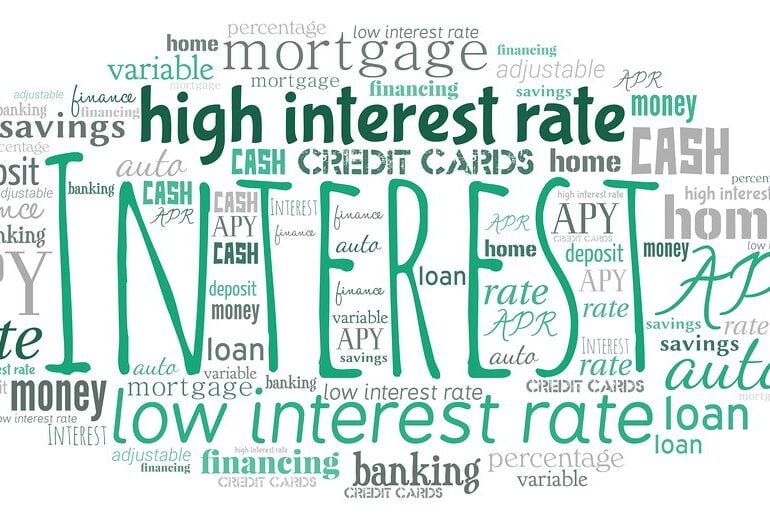
Hard money lending is a way for investors or developers to get money for real estate projects without going through traditional banks. Private individuals or companies, called hard money lenders, offer short-term loans with higher interest rates and fees than regular bank loans.
Pros
Hard money loans offer fast access to funding for real estate projects. Unlike traditional bank loans that can take weeks or months to process, hard money loans can be approved and funded within days. This makes them a popular choice for real estate investors who need to act quickly on a project.
Hard money loans are secured by the property, which means the property is used as collateral. This lowers the risk for the lender. Hard money lenders focus on the property’s value, so they may be more open to working with borrowers who have poor credit or don’t qualify for bank loans.
Cons
These loans are pricier than regular bank loans due to their higher interest rates and fees. If the borrower can’t pay back the loan, the lender may have to take back the property to get their money back.
20. Participating Mortgages

Participating mortgages are a type of loan where the lender gets more than just interest payments. They also get a share of the profits made from the property. The borrower and lender agree on how to split the profits, with the lender getting a percentage of the money the property makes or when it’s sold.
Participating mortgages are often used in commercial real estate deals. The lender takes on more risk but can potentially earn more money. The borrower gets lower interest rates and can keep more ownership of the property.
Pros
Participating mortgages offer more ways for borrowers to get financing, especially when traditional options aren’t available. Participating mortgages also gives borrowers more flexibility in paying back their loans and the chance for lower interest rates.
Cons
The lender shares in the property’s profits and faces the same risks as the borrower, such as market changes and unexpected events that could affect the property’s profitability.
21. Mortgage Notes

A mortgage note is a legal document that explains the rules of a mortgage loan. It’s a written promise to pay back money borrowed to buy a property. The note says how much interest you’ll pay when you need to make payments, and what happens if you don’t pay on time.
When someone gets a loan to buy a house, they sign a document called a mortgage note. This document shows that they borrowed money and have to pay it back. The lender also gets a legal claim on the property, called a mortgage or deed of trust, to make sure they get their money back.
Mortgage notes can be transferred between lenders, investors, and others, which is called “assigning” the note. The loan terms stay the same, but the new owner gets the borrower’s payments.
Pros
Make money without much effort by collecting interest payments from borrowers.
Cons
If the borrower can’t pay back the loan, the investor may lose money.
22. Participating Notes

Participating notes are a type of loan that lets investors share in a company’s profits. They’re different from regular loans because investors get a cut of the profits, as well as interest on the loan amount.
Participating notes are used by new companies to raise money when they don’t have enough assets or credit history for a regular bank loan. Investors who are okay with taking more risk might like participating notes because they could make more money.
Pros
Investors and companies can work together to benefit each other. When investors share in a company’s profits, they want the company to do well. This can help the company grow. Also, companies can get money from participating notes if they can’t get funding in other ways.
Cons
If the company doesn’t do well, the investor may not make as much money and could be at risk of losing their investment.
23. Debt Investing

Debt investing in real estate means lending money to someone who wants to buy or develop a property. The borrower pays back the loan with interest and principal payments according to the loan agreement. There are different types of debt investing, like commercial mortgage-backed securities, mortgage notes, and mezzanine financing.
Pros
Debt investing is a good way for investors to get a steady income from interest payments. It’s a popular choice for those who want a reliable source of cash. Plus, the investment is often backed by the property, which gives investors some protection if the borrower can’t pay back the loan.
Cons
The property’s value may go down, which lowers the security’s value. Also, if borrowers don’t pay back their loans, investors may lose money.
24. Mortgage Investing
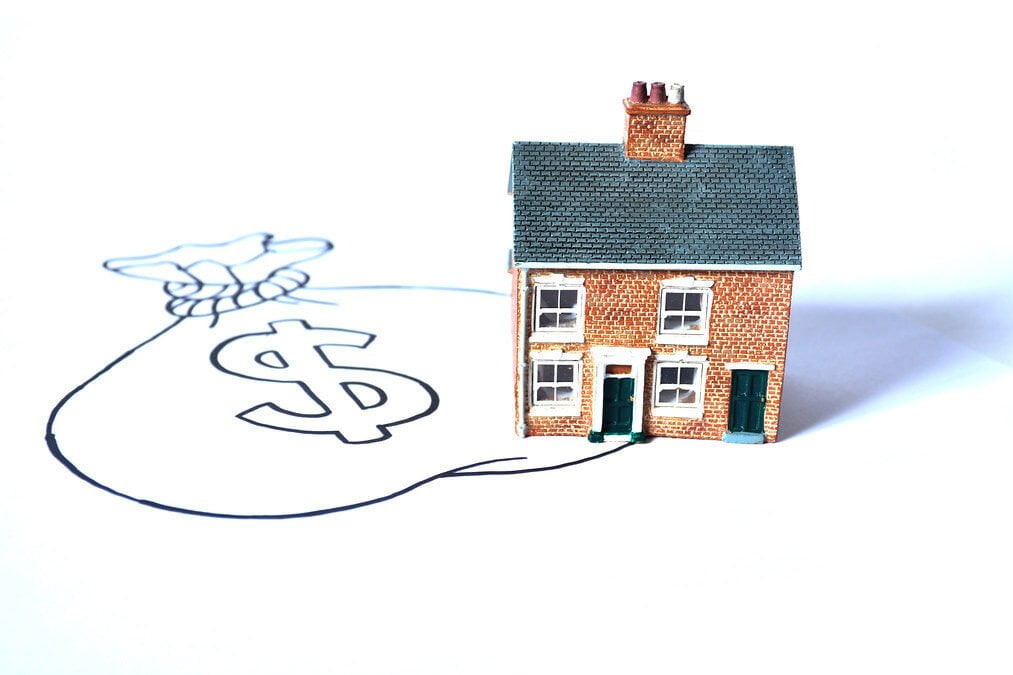
Mortgage investing means making loans that are backed by real estate. These loans can be for homes or businesses, and the investor makes money from the interest and payments made on the loan over time.
There are different ways to invest in mortgages, such as loans, investing in mortgage-backed securities, or investing in real estate investment trusts that hold mortgage assets.
Pros
Investing in mortgages can give you a steady income and is very safe because the loans are usually backed by the property.
Cons
If the borrower can’t pay back the loan, the lender might lose some or all of their money. Also, the value of the property and the potential profits for investors can change if mortgage rates go up and down.
25. Bridge Financing

Bridge financing investing means investing in short-term loans or debt securities that fill the gap between the need for quick funding and the availability of traditional financing options.
Pros
Bridge loans offer the potential for higher returns because they are short-term and have higher interest rates compared to traditional fixed-income investments like bonds or CDs. Investing in bridge financing can also provide diversification benefits to investors by exposing them to a different type of debt instrument.
Cons
Bridge loans are risky because they are often given to borrowers who may not be able to pay them back. Also, changes in the market or interest rates can affect how well these loans do because they can affect how many people want short-term loans and how easy it is to get other types of loans.
26. Trust Deeds

A trust deed, also called a deed of trust, is a legal paper that secures a loan for buying real estate. It’s like a mortgage because it gives the lender a stake in the property to guarantee that the loan will be paid back.
A trust deed has three parties: the borrower (trustor), the lender (beneficiary), and the trustee. The trustee is usually a neutral third party, like a title company or attorney, who holds legal ownership of the property until the loan is fully paid.
When someone borrows money to buy a property, they promise to pay it back by signing a note. To make sure the lender gets their money back, a trust deed is created and recorded with the county. This tells everyone that the property has a loan on it. If the borrower can’t pay back the loan, the trustee can sell the property to get the money back for the lender.
Pros
Makes money without much effort by collecting interest payments from borrowers.
Cons
The borrower may not be able to pay back the loan, which could cause the investor to lose money.
6. CO-TENANCY STRATEGIES
27. Assisted Living Investing

Assisted living investing means investing in homes that help elderly or disabled people with daily activities. These homes offer services like bathing, dressing, medication management, and meals.
Pros
You can make money by renting out space to someone who will run an assisted living facility and take care of the residents. As people get older, there is a greater need for these types of facilities, making them a good investment opportunity.
Cons
Changes in healthcare rules or funding may affect the facility’s profits. Also, running a facility that cares for vulnerable people may bring more legal risks.
28. Senior Housing Investing

Senior housing investing involves investing in residential facilities that cater to the needs of seniors. These facilities can include assisted living, independent living, memory care, and continuing care retirement communities. Senior housing facilities offer a variety of services such as healthcare management, social activities, housekeeping, and transportation.
Pros
Senior housing facilities are a great investment opportunity because more and more people are looking for them as they get older. You can make money by renting out the space to someone who will take care of the facility and provide services to the residents.
Cons
Changes in healthcare rules or funding may affect the facility’s profits. Also, running a facility that cares for vulnerable people may bring more legal risks.
29. Group Home Investing

Group home investing involves investing in residential facilities that house individuals who need help with daily living activities, such as those with disabilities, mental illness, or addiction. These homes provide a supportive living environment and offer services like medical care, counseling, and job training.
Pros
You can make money by renting out space to someone who will run a group home and take care of the people living there. Group homes are becoming more popular, so investing in them can be a good way to make money.
Cons
Changes in healthcare rules or funding may affect the facility’s profits. Also, running a facility that cares for vulnerable people may bring more legal risks.
30. Co-living Investing

Co-living investing means investing in homes that are made for people who want to live together. These homes usually have private bedrooms and bathrooms, but also have shared spaces like kitchens, dining rooms, and living rooms.
Pros
Co-living properties are a great way to make money. You can lease the space to someone who will take care of the property and help the people who live there. This is a good investment because more and more people want to live in affordable places with other people.
Cons
Changes in housing rules or zoning laws can affect how profitable a property is. Having multiple tenants can also increase the risk of legal issues.
31. Co-Working Investing

Co-working investing means investing in shared office spaces that can be used by many people. These spaces usually have flexible rental agreements and come with useful things like fast internet, meeting rooms, and office equipment.
Pros
Co-working spaces are a great way to make money. You can lease the space to someone who will take care of the property and provide services to the tenants. This is a good investment because more and more people are looking for flexible workspaces and working remotely.
Cons
Changes in regulations or economic conditions may affect the property’s profitability. Having multiple tenants may also increase liability risks.
7. GROUP INVESTING
32. REITs (Real Estate Investment Trusts)

A REIT is a way for many people to invest in real estate together. They pool their money to buy and take care of properties that make money. This lets investors have a variety of properties without having to own or manage them themselves.
There are three types of REITs: equity, mortgage, and hybrid. Equity REITs manage real estate properties that generate income, while mortgage REITs manage loans and debt secured by real estate. Hybrid REITs invest in both equity and debt securities.
Pros
REITs make it easy to invest in real estate with low minimum requirements. They’re also easy to buy and sell like stocks because they’re traded on public exchanges.
Cons
Changes in the economy and market trends can affect the value of real estate properties, which in turn can affect the value of REIT shares. Interest rate changes can also impact REIT profitability and dividend payouts by affecting borrowing costs.
33. Real Estate Crowdfunding

Real estate crowdfunding is when many investors combine their money to fund a real estate project. This allows people to invest smaller amounts of money and still be a part of bigger projects that they couldn’t afford on their own.
Crowdfunding sites let investors pick from different types of real estate investments, like commercial, residential, and industrial properties. Investors can choose which projects to invest in based on their own goals, risk tolerance, and investment criteria.
Pros
Real estate crowdfunding lets investors access a variety of real estate investments with low minimum investment requirements. It can also provide higher returns than stocks and bonds.
Cons
Investments are not guaranteed by the government or financial institutions, so they are not insured against losses. The investment’s value can be affected by market conditions, the success of the real estate project, and other factors.
34. Real Estate Syndication

Real estate syndication is when a group of investors combines their money and skills to invest in big real estate projects that one person couldn’t handle alone. The investors, called limited partners, usually give most of the money, while the syndicator, or general partner, runs the project and makes decisions for the group.
The syndicator finds and manages real estate deals. They negotiate investment terms and oversee the project from beginning to end. They get a share of the profits and part ownership of the property for their work.
Pros
Syndication lets regular investors combine their money to invest in bigger and more profitable real estate projects. It also gives them access to experienced professionals who have a history of success in the industry.
Cons
The investment’s success relies on the syndicator’s knowledge and experience. The investment’s value can be affected by different factors such as economic conditions, market trends, and unexpected events.
35. Joint Ventures

Joint ventures in real estate involve two or more parties working together to complete a real estate project. Each party contributes different resources, like money, skills, or property, and shares in the project’s profits and losses.
Joint ventures come in different forms such as partnerships, LLCs, or corporations. The structure of the joint venture is decided by the parties involved, depending on their needs and goals.
Pros
Real estate investors can do bigger and harder projects by working together. They can share their skills and money to lower their risks and have a better chance of succeeding.
Cons
The project’s success relies on everyone working well together. If there are arguments or different goals, the project might fail. Also, each person in the group is responsible for the project’s debts and responsibilities, which could be a big financial risk.
36. Real Estate Derivatives

Real estate derivatives are financial tools that let investors participate in real estate markets and assets without owning property. They’re often used for hedging, speculation, and diversifying investment portfolios.
Real estate futures contracts are a type of real estate derivative. They let investors buy or sell a set amount of real estate at a fixed price on a future date. Instead of physically receiving the property, the contracts are usually settled with cash.
A real estate option is a type of derivative that allows the holder to buy or sell a specific amount of real estate at a set price on a future date. It’s not mandatory to exercise this right. Real estate options can be used to protect against losses or to make predictions about future price changes.
REITs and MBS are real estate investments that let people invest in the property market. REITs are publicly traded companies that own and manage real estate assets. MBS are securities that represent ownership in a group of mortgages, giving investors a way to invest in real estate through the performance of the underlying mortgage loans.
37. Real Estate Futures

Real estate futures are contracts that let investors buy or sell a set amount of real estate at a fixed price on a future date. These contracts are traded on futures exchanges and are usually settled with cash instead of actually exchanging the property.
Real estate futures are used by investors for different reasons. Real estate developers and property owners use them to protect themselves from potential losses due to changes in real estate prices or interest rates. Speculators use them to make money from expected changes in real estate prices or market conditions. Portfolio managers use them to reduce risk and diversify their portfolios.
Real estate futures contracts are like templates, with a set amount of property, date, and location already decided. The price of these contracts depends on what people think the property will be worth in the future, and is affected by things like how much property is available, how much people want it, and how the economy is doing.
Cons
Leverage means using borrowed money to invest in futures contracts, which can increase both profits and losses. Counterparty risk is the chance that the other party in the futures contract might not fulfill their obligations.
38. Real Estate Options

Real estate options are contracts that allow someone to buy or sell a certain amount of property at a set price on a specific date in the future. These options can be used to protect against losses or to take a risk and potentially make a profit.
Real estate options work like stock options. They let you buy or sell a property at a set price. This can help protect you from losing money if the real estate market changes. For instance, if you own a property, you can buy a put option to sell it at a certain price if the market value drops below a certain point.
Real estate options can be used for speculation, allowing investors to profit from expected changes in real estate prices or market conditions. For instance, an investor may buy a call option to purchase a property at a set price if they anticipate the property’s market price to increase in the future.
Real estate options are usually traded outside of organized exchanges, which gives more flexibility in contract size and terms. But, this also means there is a risk that the other party may not fulfill their obligations.
Cons
There are two types of risks to consider: counterparty risk and market risk. Market risk is when the price of the asset you have an option on goes down, causing you to lose money.
39. Real Estate ETFs

Real estate ETFs are investment funds that let people buy and sell shares in a group of real estate assets, like REITs and real estate development companies. These ETFs are traded on stock exchanges, just like regular stocks, and can be bought and sold anytime during the day.
It is important to carefully evaluate the specific ETF before investing. Different real estate ETFs may have different strategies, asset allocations, fees, and risks. Some real estate ETFs may focus on certain types of real estate assets or regions, which can affect performance.
Pros
Real estate ETFs offer a way to invest in a variety of real estate assets, which can lower risk and volatility compared to investing in just one property or company. They also require less money and have lower fees than investing directly in real estate.
Real estate ETFs provide liquidity as investors can quickly buy and sell shares on an exchange.
Cons
Market risk and interest rate risk.
40. Real Estate Mutual Funds

Real estate mutual funds invest in real estate assets like REITs, real estate development companies, and other related companies. They are different from exchange-traded funds (ETFs) because they are priced once a day and can be bought and sold through fund companies or brokerage firms.
Real estate mutual funds vary in their strategies, fees, and risks. Some may focus on specific types of real estate or regions, which can impact their performance.
Real estate mutual funds provide liquidity, allowing investors to easily buy and sell shares through fund companies or brokerage firms. This is helpful for investors who want to adjust their real estate holdings quickly based on market conditions or investment goals.
Pros
Real estate mutual funds offer a way to invest in a variety of real estate assets, which can lower risk and volatility compared to investing in just one property or company. They also require less money and have lower fees than investing directly in real estate.
Cons
Market risk and interest rate risk.
41. Fractional Ownership or Timeshare

Fractional ownership is when several people or groups own a part of a property. It’s commonly used for fancy vacation homes or properties that are too pricey for one person to buy alone.
Fractional ownership means that each owner gets to use the property for a certain amount of time each year, based on their share of ownership. They may also have to pay for some of the property’s upkeep and other costs.
Pros
Fractional ownership offers many benefits, including lower costs, more vacation options, and the chance to own a share of a property that may have been too expensive otherwise. It also allows for better use of the property, as multiple owners can split the costs and responsibilities.
Cons
Ownership agreements can be difficult to understand and may need legal help. Owners may also argue about how to use the property, who is responsible for maintenance, and other problems.
42. Private Equity Real Estate Investing

Private equity real estate investing is when a group of people put their money together to buy, build, and take care of real estate. A private equity firm helps manage the investment and gets paid a fee and a portion of the profits for their work.
Private equity real estate investments come in various forms, such as owning property directly, partnering with others, providing financing, or investing in distressed debt. The aim is to produce profitable returns for investors by obtaining and managing top-notch real estate assets.
Investing in private equity real estate is risky but can be rewarding. It has the potential for big returns, but there are also risks like market changes, unexpected costs, and project delays.
8. DISTRESSED & LOW-INCOME SITUATIONS
43. Tax Liens

Tax lien investing is when you buy liens on properties that haven’t had their property taxes paid. If the property owner doesn’t pay their taxes, the government can put a lien on the property and sell it to investors.
Pros
You can make a lot of money from interest payments and selling the lien or property later on.
Cons
There’s a chance the property owner will pay the lien before the investor can foreclose. If that happens, the investor might only get lower interest payments. If the investor does foreclose, they might have to pay for any other debts on the property, which lowers profits.
Tax lien investing can be risky if the property is in an area where property values are decreasing or there is not much demand for real estate. Even if the investor takes possession of the property, they may have trouble selling it and getting their money back.
Tax lien investing is a complex process that requires careful research and legal knowledge. It can be challenging and time-consuming, so investors must understand the risks and rewards involved.
44. Tax Deeds

Tax deed investing is when you buy a property that the government has taken because the owner didn’t pay their property taxes. You usually buy the property at a public auction.
Pros
The potential to earn significant returns if the property can be resold for a profit.
Cons
The property may have debts like mortgages or utility bills that the investor needs to pay off. It may also need repairs or renovations, which can increase the investment cost and affect potential returns.
Tax deed investing can be risky if the property is in an area where property values are going down or there isn’t much demand for real estate. This can make it hard for the investor to sell the property or get their money back.
45. Foreclosures
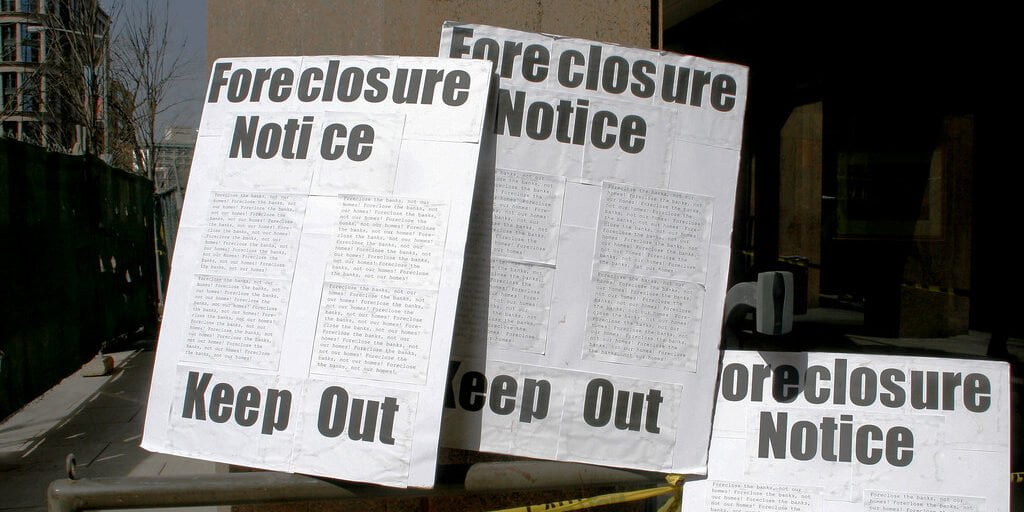
Foreclosure investing means buying properties that were taken back by lenders because the owner didn’t pay their mortgage. Investors usually buy these properties at an auction or from the lender. If they can sell the property for more than they paid, they can make a lot of money.
Pros
Investors can make big profits by buying properties for less than their market value. This is called foreclosure investing. It can also give them a chance to buy properties in great locations that aren’t usually for sale. There are different ways to make money from these properties, like fixing them up and selling them or renting them out.
Cons
The property may have debts or unpaid bills that the investor needs to pay off. It may also need repairs or renovations, which can increase the investment cost and affect potential profits.
Foreclosure investing can be risky if the property is in an area where property values are going down or there isn’t much demand for real estate. This can make it hard for the investor to sell the property or make their money back.
Foreclosure investing is a tricky investment strategy that requires thorough research and legal knowledge. It involves buying foreclosed properties, which have specific laws and regulations governing their sale and transfer. Investors should do their homework and seek expert advice to understand the risks and rewards of this type of investment.
46. Sheriff Sales

Sheriff sales are public auctions of real estate properties ordered by a court or government agency to pay off debts. They usually happen because of mortgage foreclosures, tax liens, or legal judgments. A sheriff or court-appointed official runs the auction, and anyone can attend.
Pros
Sheriff sales offer great benefits for investors, such as buying properties at a lower price, having more investment options, and getting high returns. Plus, they are a faster way to buy properties compared to traditional real estate investing.
Cons
Properties sold at sheriff sales are usually sold as-is, which means investors may have to pay for repairs or deal with other issues. These properties may also have liens or other problems that make it hard to get a clear title, leading to expensive legal battles. Finally, there is a lot of competition for these properties, which can drive up prices and lower potential returns on investment.
47. Rehabbing Distressed Properties

Renovating run-down properties can be a profitable investment for people who know about construction. They can buy a property that needs fixing up, make the necessary repairs and upgrades, and sell it for a profit.
To succeed in rehabbing distressed properties, investors need to know construction and renovation, estimate costs, manage contractors, and follow local building codes. They should also be good at spotting properties with potential and understand the local real estate market.
Pros
Investors can buy properties for less than their market value. These are called distressed properties and are sold at a discount. This gives investors a chance to get assets for a lower price. After fixing up the property, the investor can sell it for more money and make a profit.
Rehabbing can boost an investor’s equity by raising the property’s value through renovations. This can improve their financial position and provide funds for future investments or generate more cash flow.
Cons
Unexpected expenses and delays can reduce profits and make the investment less profitable. Also, changes in the market can affect the property’s value, which may lower the return on investment.
48. Opportunity Zone Real Estate Investing

Opportunity zone real estate investing means investing in real estate projects in specific areas in the US that are struggling financially. These areas are called opportunity zones, and the goal of the program is to boost investment and economic growth in these communities.
Investing in real estate projects in opportunity zones can give you tax benefits. You can delay and lower the taxes you pay on the investment. If you keep the investment for ten years or more, you won’t have to pay taxes on any profits you make.
Real estate projects in opportunity zones can be commercial, industrial, residential, or mixed-use. They can involve building new structures or fixing up existing ones.
Investors can invest in opportunity zone real estate in two ways: directly or through a fund. Direct investment means investing in a specific real estate project. On the other hand, an opportunity zone fund combines investments from multiple investors and invests in one or more projects.
49. Distressed Debt Investing

Distressed debt investing means investing in debt securities of real estate properties that are in trouble. This could be mortgage loans, bonds, or other types of debt that are not being paid back or are likely to not be paid back. Usually, big investors or investment firms that know a lot about these kinds of investments do this type of investing.
Pros & Cons
Investing in distressed debt is risky but can be rewarding. You could make a lot of money, but you could also lose some or all of your investment. It takes special skills to evaluate distressed assets, negotiate with borrowers, and manage properties.
50. Receivership Real Estate Investing

Receivership real estate investing means investing in properties or assets that are controlled by a court-appointed receiver because of financial problems or legal issues. These properties can be commercial or residential real estate, land, or equipment.
Pros
Investing in receivership real estate can be a good chance for investors to buy properties at lower prices. The court-appointed receiver may want to sell the property fast to pay off debts, which means the property may be cheaper than others on the market.
Cons
The properties might need big repairs or changes, and the legal process for receivership can be complicated and take a long time. Also, there could be other claims or debts on the property that need to be fixed before it can be sold.
51. REO Investing

REO investing involves buying properties that have been foreclosed on by a bank or lender. This happens when a homeowner can’t pay their mortgage. If the property doesn’t sell at a foreclosure auction, the lender becomes the owner and it’s called an REO property.
Investors team up with a real estate expert who knows about REO investing. They help find good properties, check their value and condition, and guide the buying process. Investors also need to know their financing choices and be ready to act fast when a chance comes up. Lots of people want REO properties, so it’s important to move quickly.
Pros
REO properties are a good deal for investors because the lender wants to sell them fast and make up for their losses. This means investors can buy them at a lower price.
Cons
Before selling or renting a property, it’s important to address any damage or liens on the property. Buying REO properties can also be complicated and take a lot of time, as investors need to deal with legal and administrative obstacles.
52. Pre-Foreclosure Real Estate Investing

Pre-foreclosure real estate investing means buying properties that are in that stage before they are foreclosed. This happens when the homeowner has missed mortgage payments and the property is not yet sold at an auction. Investors in pre-foreclosure work with homeowners who are struggling to pay their mortgage and may offer to buy the property for less than its market value. This helps the homeowner avoid foreclosure and protect their credit.
Pros
Investors can make good money by buying pre-foreclosure properties at a lower price than their market value. This type of real estate investing can also help struggling homeowners and prevent foreclosures and abandoned properties, which benefits the community.
Cons
Investing in pre-foreclosure properties requires research, negotiation skills, and careful evaluation of the property’s value and the homeowner’s financial situation. It can be a complex and time-consuming process, with legal and financial complexities to navigate. Investors must weigh the potential risks and rewards before making a decision.
53. Low-Income Housing Tax Credit (LIHTC) investing

LIHTC investing means buying a part of a real estate project that offers affordable housing to low-income people. This investment is usually done through partnerships or LLCs that focus on creating or fixing up affordable housing properties.
Pros
Investing in affordable housing properties through LIHTC provides tax benefits. Investors can claim federal tax credits for 10 years. These investments also offer a stable source of income as the rental income is often subsidized by government programs, making it less affected by market changes.
Cons
LIHTC properties must follow federal and state regulations for affordable housing. Changes in government policies and funding may affect the demand for these properties.
54. Short Sales

Short sale investing means buying a property from a homeowner who is struggling financially and owes more on their mortgage than the property is worth. The homeowner works with their lender to sell the property for less than what they owe on the mortgage, and the lender agrees to forgive the remaining debt.
Pros
Short sale properties are usually sold for less than their market value, which can be a great opportunity for investors to make a profit. Buying a short sale property can also be a quicker and easier process because the seller wants to sell fast and the lender may be willing to negotiate to avoid foreclosure costs.
Cons
Short sale properties are usually sold “as is”, meaning they may need repairs or renovations to be sold. The process can also be complicated and take a lot of time because the seller, lender, and buyer all need to agree on the terms of the sale.
55. Real Estate Auctions

Real estate auctions are a chance for investors to buy properties at lower prices. The highest bidder usually gets the property. Auctions can be organized by different groups like government agencies, banks, and private companies.
Pros
Auctions can be a great way to buy properties for less than their market value. These properties may be in foreclosure, need repairs, or be in a bad condition, which makes them less attractive to regular buyers. Investors can take advantage of this and buy these properties at a lower cost, potentially making a big profit.
Cons
Properties sold at auctions are usually sold “as is”, meaning buyers may not inspect them beforehand. Auctions can be fast-paced and competitive, making it hard for investors to make informed decisions.
9. LEASING STRATEGIES
56. Master lease

A master lease is a rental agreement where the tenant becomes the “master tenant” and rents out the property to other tenants. They take on the role of a landlord for the subtenants.
Master leases are commonly used in commercial real estate when the main tenant wants to make money by renting out part of the space to other businesses. For instance, a business might rent a whole building from the landlord and then rent out separate offices or retail spaces to other businesses.
Pros
Master leases benefit both landlords and tenants. Landlords can enjoy a stable, long-term tenant who takes care of managing subtenants and maintaining the property, which reduces their administrative and maintenance duties and provides a steady rental income. Tenants can have more flexibility and control over the space they rent, and even generate rental income.
Cons
Master lease agreements can be complicated and need careful negotiation and planning to protect everyone involved. The main tenant and subtenants should have written agreements that explain their rights and duties, and any rules or limits on using the property. It’s also important to think about the money involved, like the costs of renting and taking care of the property, and the chance to make money from renting it out.
57. Leasehold Investing

When you make a leasehold purchase, you are only buying the building and not the land it sits on. This means that you have the right to use and occupy the land for a specific amount of time, usually between 30 and 99 years. However, you do not actually own the land – you are leasing it from the landlord or freeholder.
Leasehold purchases are common in places where land is hard to find or costly, like cities or popular vacation spots. They’re also popular in commercial real estate, where businesses rent a property for a certain amount of time to run their operations.
Pros
Leasehold purchases have benefits such as lower upfront costs since you don’t buy the land. You can use the property for a specific period without worrying about maintenance or other land ownership issues.
Cons
Buyers need to know the lease terms and restrictions on property use or changes. They should also think about how long the lease lasts, since properties with shorter leases may be harder to sell or finance later on.
58. Commercial Leasehold Investing

Commercial leasehold refers to the acquisition of a commercial property, which includes office buildings, retail spaces, or industrial facilities, but excludes the land on which the property is situated.
Pros
Getting a commercial freehold has benefits. You don’t have to buy the land, so it’s cheaper at the start. You can use the space for a certain amount of time without worrying about taking care of it or other issues that come with owning land.
Cons
You need to know the rules of the lease and any restrictions on how you can use or change the property. Also, think about how long the lease lasts because it could make it harder to sell or get financing if it’s too short.
59. Residential Leasehold Investing

A residential leasehold refers to the acquisition of a residential property, such as an apartment building or a single-family home, but excludes the land on which the property is situated.
Pros
Getting a residential leasehold property has advantages. You don’t have to pay a lot of money upfront because you’re not buying the land. Plus, you can use the property for a set time without having to deal with maintenance or land ownership problems.
Cons
Before buying a property, it’s important to read the lease contract carefully. Look for any restrictions on how you can use or change the property. Also, consider how long the lease is for. If it’s short, it could make it harder to sell or get financing in the future.
10. PROPERTY TYPES
60. Mobile Home Parks

Investing in mobile home parks means buying and taking care of a group of places where people live in their own mobile homes. The owner of the park gets paid rent by the people who live there, and in return, they provide services like water, sewer, and trash removal.
Pros
Investing in this type of real estate has the potential for steady income, requires minimal upkeep expenses, and is easier to get into than other types of real estate investments.
Mobile home park residents are usually more stable and stay for a longer time, which means there are fewer empty spaces and less money spent on finding new tenants.
Cons
Investors need to consider local rules and regulations that could affect the park’s profitability. They also need to check the park’s financial status, including how much rent is collected, how much maintenance costs, and the park’s overall condition.
61. Mobile Homes
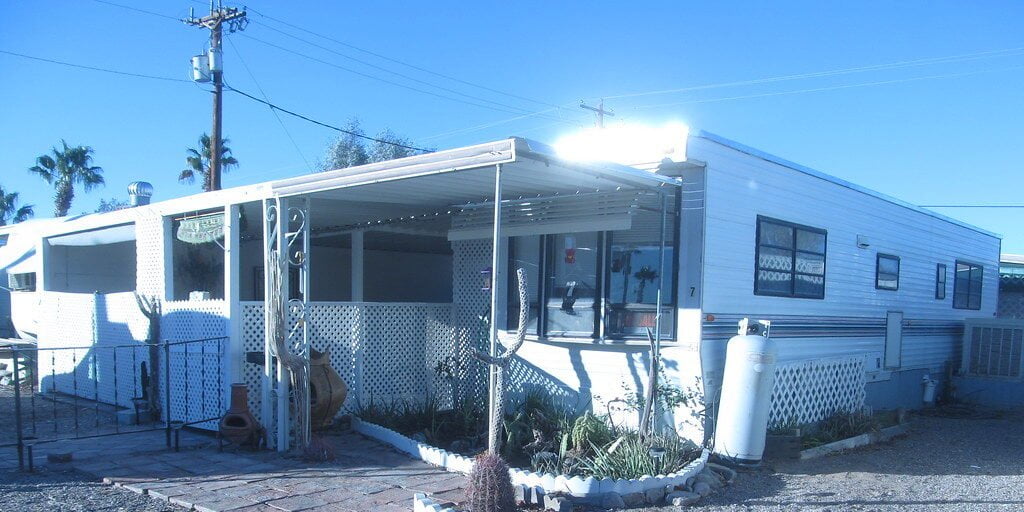
Mobile home investing is a type of real estate investment where you buy, improve, and either sell or rent out individual mobile homes. These homes are pre-made and can be moved to a permanent location and placed on a foundation.
Pros
Benefits of investing in modular homes include lower acquisition costs, potential for strong rental income, and quick returns through renovations.
Cons
Investors need to be aware of local zoning and regulations that could affect the value of mobile homes as an investment. They should also assess the age, condition, and location of each mobile home to determine its potential value.
62. Self-Storage Units

Investing in self-storage units means buying and managing storage facilities as a type of real estate investment. These facilities are commercial properties that offer storage space for people and businesses.
Pros
Investing in this type of real estate has the potential for steady income, requires minimal upkeep expenses, and is easier to get into than other types of real estate investments.
Tenants sign leases for a specific time and take care of their own access and security. Property owners spend less money compared to renting out apartments or other properties.
Cons
Investors need to consider how the local economy and market conditions could affect the demand for storage units and the facility’s profitability. They should also assess the financial health of each facility, looking at things like how many units are rented, how much they’re rented for, and the condition of the property.
63. Hotels

Hotel investing is when you buy, run, and manage hotels as a way to invest in real estate. Hotels are places where people stay and get services.
Pros
This opportunity offers the chance for big profits, the ability to use resources efficiently, and take advantage of the growth in the travel industry.
Cons
Investors need to consider how the local economy and market conditions could affect the demand for hotel rooms and the hotel’s profitability. They should also examine the hotel’s financial health, including occupancy rates, revenue per available room, and operating expenses.
64. Office Buildings

Investing in office buildings means buying, taking care of, and running properties that are meant for businesses and organizations to use as offices. These buildings are commercial and are specifically made for office space.
Pros
This type of property offers stable income, as tenants sign long-term leases. This means lower costs for the owner compared to other rental properties like apartments. Additionally, owning multiple properties can lead to cost savings through economies of scale.
Cons
Investors need to consider how the local economy and market conditions could affect the demand for office space and the property’s value. They also need to check if tenants are financially stable and have a healthy business.
65. Retail

Retail real estate investing means buying, taking care of, and running commercial properties that businesses use to sell things to customers. These properties can be small shops in a strip mall or big shopping centers.
Pros
This investment offers steady income, extended rental agreements, and the chance to benefit from the expansion of online shopping.
Tenants sign long-term leases for retail properties, which lowers costs for property owners compared to apartments. Having a diverse mix of tenants can also reduce vacancy rates and increase the chances of lease renewals.
Cons
Changes in the local economy or market conditions can affect the demand for retail space and the property’s value as an investment. E-commerce growth has disrupted traditional retail business models and caused many physical stores to close.
66. Industrial

Investing in industrial real estate means buying, taking care of, and running commercial properties that are meant for industrial purposes like making things, storing things, and moving things around. These properties can be big or small, from factories to warehouses.
Pros
This investment has the potential for steady income, extended rental agreements, and the advantage of using larger resources to save money.
Cons
Changes in the local economy or market conditions can affect the demand for industrial space and the property’s value as an investment. Technological advancements can also make certain types of manufacturing or distribution outdated and impact industrial properties.
67. Mixed-Use

Mixed-use real estate investing means buying, taking care of, and running properties that have different purposes, like stores, homes, offices, and fun places. These properties can be small buildings in cities or big developments that cover many blocks or areas.
Pros
Mixed-use properties have multiple uses, which means they can make money from different sources like renting out retail spaces, apartments, and offices. This helps to prevent a big loss of income if some parts of the property are empty or if the market is not doing well.
Mixed-use properties have higher occupancy rates because they offer a variety of uses that are attractive to tenants. These properties provide convenient and diverse amenities that tenants are looking for.
Mixed-use properties can have advantages by combining different types of uses. For instance, a building with both residential and retail space can benefit from the increased foot traffic generated by the retail tenants. At the same time, the retail tenants can benefit from the potential customer base provided by the residential tenants.
Cons
Changes in the local economy or market conditions can affect the demand for certain types of uses in the property. Managing mixed-use properties is more complex than single-use properties and requires more resources and expertise.
68. Student Housing

Investing in student housing means buying, taking care of, and running properties that are made for college students. These properties can be small apartment buildings close to campuses or big student housing complexes.
Pros
Investing in student housing has many benefits for investors. These include a reliable source of income, long rental agreements, and the opportunity to take advantage of the constant need for student housing.
Student housing properties can save money by being larger. Big student housing complexes can have things that students like, such as places to study, exercise, and have fun. These things can make students want to live there and pay more money.
Cons
Changes in enrollment or demographics can affect the demand for student housing in certain markets or institutions. Managing student housing properties can be more complex than other rental properties, requiring more resources and expertise.
69. Single Family Rental Portfolio

A single family rental portfolio is a group of homes owned by an investor and rented out to tenants. The portfolio can be small or large, with homes in different areas.
Pros
- Diversification: By owning multiple properties, investors can spread their risk across different markets and properties. This helps to minimize the impact of any one property or market on the overall portfolio.
- Cash flow: Single family rental properties can provide a steady stream of rental income, which can be used to cover expenses and generate profits.
- Appreciation: Over time, the value of single family rental properties can appreciate, providing potential long-term capital gains for investors.
- Tax benefits: Rental properties offer a number of tax benefits, including deductions for expenses such as mortgage interest, property taxes, and repairs.
Cons
Owning multiple properties in different places requires ongoing maintenance and management. There may also be turnover with tenants, which needs to be addressed.
70. Multi-Family Real Estate
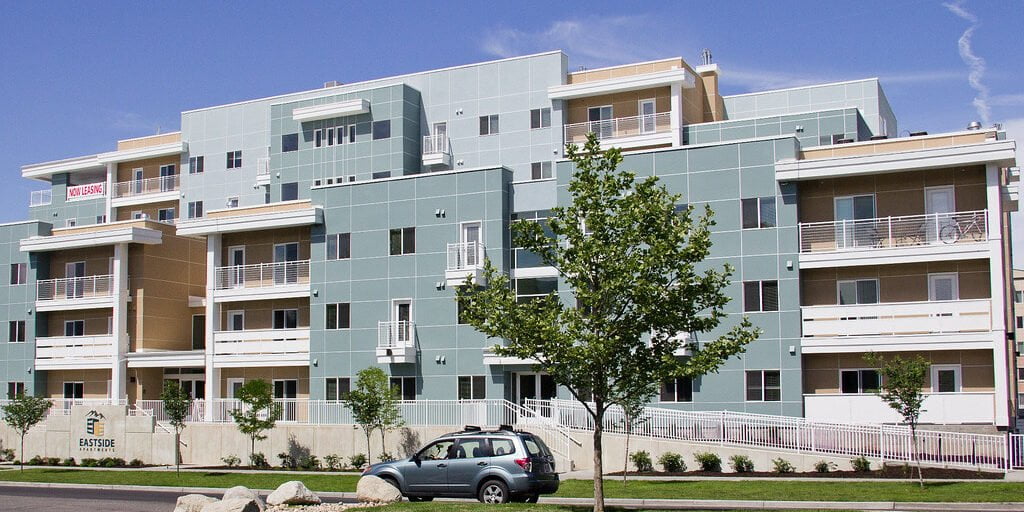
Multi-family real estate investing involves residential properties that are built for multiple families to live in, like apartments, condos, townhouses, and other multi-unit buildings.
Pros
Multi-family properties can generate passive income by offering higher rental income than single-family properties. This makes them a great option for investors looking for cash flow. They also offer economies of scale, as maintenance and management costs can be spread across multiple units, reducing the cost per unit. Multi-family properties can also protect against inflation by adjusting rental rates over time to keep up with rising costs.
Cons
Owning and managing multi-family buildings can come with unexpected expenses. Repairs, renovations, and maintenance can be costly, especially for older properties or in areas with harsh weather. Managing tenants and their issues can also be time-consuming and require knowledge of property management and legal requirements. Changes in the economy and local market conditions can affect rental demand, which can impact rental income and property values.
71. Mixed-Use Development

Mixed-use development is a type of real estate investment that combines different types of land use in one project. This can include residential, commercial, and/or industrial uses. The goal is to create communities where people can live, work, and play in one area, making it easy to walk around and enjoy the surroundings.
Mixed-use developments come in various shapes and sizes. They can be tall buildings with stores on the first floor and apartments on the upper floors, or smaller communities with a blend of houses, apartments, and small businesses.
Pros
Generates income through a variety of revenue streams, such as rental income from residential units, retail space, and office space. Additionally, mixed-use developments can benefit from increased foot traffic and tenant retention due to the convenience of having multiple amenities in one location.
Cons
Changes in zoning or land use rules may affect the project’s profitability. Also, there could be more competition from other mixed-use developments nearby.
11. ALTERNATIVE TYPES
72. Adaptive Reuse

Adaptive reuse means using existing buildings for new purposes instead of tearing them down and building new ones. For example, turning old factories, warehouses, or offices into apartments, hotels, or other businesses.
Pros
This strategy generates income by transforming unused properties into more valuable ones. It also helps preserve historic buildings and promotes sustainable development by reducing the environmental impact of new construction.
Cons
Renovating an old building can cost more than building a new one. It can also be difficult to follow building codes and regulations when repurposing an existing structure.
73. Green Building Investing
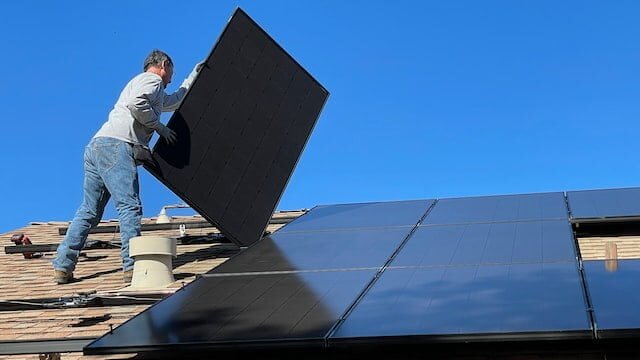
Green building investing means investing in real estate that is built and operated in an environmentally friendly way. This includes using materials and systems that save energy and water, as well as renewable energy sources.
Pros
Green buildings can save money by using less energy and water, and may increase property values because more people want sustainable buildings. They also help the environment by reducing carbon emissions and improving the impact of buildings on the environment.
Cons
Using sustainable building methods can be more expensive than traditional methods, which can affect the project’s profitability. It may also be difficult to comply with local building codes and regulations.
74. Historic Preservation

Historic preservation means protecting important buildings, structures, and sites that have historical, cultural, or architectural value. This can involve fixing up old buildings to look like they did before, or finding new ways to use them while still keeping their historical and architectural importance.
Pros
We make money by renting or selling fixed-up buildings. Plus, when we work on preserving historic sites, we help keep our local culture alive and make our community stronger.
Cons
Investing in historic preservation can be tough and costly. Restoring old buildings can be expensive, and there are often strict rules about what changes can be made. It’s crucial to do your research and talk to experts in historic preservation to make sure your project is doable and follows all the rules.
75. Energy Efficiency Retrofits

Energy efficiency retrofits involve improving the energy efficiency of an existing building or property. This can be done by installing energy-efficient lighting and HVAC systems, improving insulation and air sealing, and using renewable energy sources like solar panels or geothermal systems.
Pros
This reduces costs by using less energy, making the property more valuable, and improving its sustainability.
Cons
Retrofitting a property can be expensive and take a while to pay off. You also need to think about following regulations and dealing with tenant behavior.
76. Corporate Rentals

Corporate rentals are a profitable option for real estate investors who want to earn rental income. These rentals are also called executive rentals or corporate housing. They are usually rented by business travelers, relocating employees, or people who need temporary housing for work-related purposes.
Pros
Corporate renters are willing to pay more for furnished properties with convenient amenities like housekeeping, laundry, and internet access. They also tend to rent for longer periods, which means more stable rental income for investors. Compared to traditional long-term rentals, corporate rentals have higher rental rates and lower vacancy rates.
Cons
Corporate housing demand can change due to economic conditions and local market factors. Furnishing and maintaining the property can be more expensive than traditional long-term rentals. Investors should assess the local rental market and demand for corporate housing, as well as costs and potential return on investment before investing in this niche.
77. Timberland

Investing in timberland means buying and taking care of the land with trees to sell the wood. This can be a good way to invest for a long time and make money from both selling the wood and the land itself.
Pros
Investing in timberland can provide a reliable source of income. Since trees take a long time to grow, a well-managed property can generate a steady cash flow as the trees are harvested and sold.
Besides cutting down trees, investing in timberland can also bring in money through hunting rentals, mineral ownership, and carbon credits.
Cons
Changes in timber prices, risks from weather events like fires or storms, and regulatory risks related to managing forests.
78. Mineral RIghts

Mineral rights investing means buying and owning the rights to extract minerals like oil, gas, coal, and precious metals from a certain piece of land. Sometimes, when someone buys a property, they don’t automatically own the mineral rights. These rights can be sold or leased separately, which gives investors a chance to make money from valuable resources.
Pros
Investors can make a lot of money if there is a valuable mineral on the property. They can sell or lease the rights for a big profit.
Cons
Minerals can change in value due to things like price changes, rules being updated, and how much it costs to get them out of the ground. Mining can also come with risks to the environment and legal issues.
79. Water Rights

Water rights investing is the act of buying, selling, leasing, and trading the legal right to use water from a specific source for a specific purpose, such as irrigation, municipal use, or industrial use. This is often done in areas where water is scarce and in high demand.
Investors can invest in water rights directly or indirectly. Direct investment can be made through partnerships or private equity firms that specialize in water rights. Indirect investment can be made through mutual funds or exchange-traded funds (ETFs) that invest in companies that own or manage water resources.
Pros
Investing in water rights is a great way to diversify your portfolio. It’s a unique opportunity that isn’t tied to traditional investments. As the world’s population grows, the demand for water is increasing, making water rights a valuable asset. You can make money by leasing or selling the rights to water users like farmers, ranchers, and municipalities.
Cons
Investing in water rights can be tricky because laws and rules about water are different in each place, and there can be legal and environmental issues to consider.
80. Agricultural

Agricultural investing means investing in the agriculture industry. This industry involves producing, processing, and distributing food and other agricultural products.
As more people are born, we will need more food and farming stuff. This is good news for investors who can make a lot of money over a long time.
Pros
Investing in agriculture is great for diversification. It lets you invest in different industries and assets. Plus, there’s always a need for agricultural products, so it’s a reliable way to make money over time.
Investing in agriculture can protect against inflation because food prices usually go up when inflation happens.
Cons
Investors in agriculture need to consider various risks, including weather-related risks that can affect crop yields and prices. Other factors to consider are market volatility, operational risks, and political risks.
81. Energy

Investing in energy can make money for those who want to invest in the global energy industry. You can invest in traditional energy like oil and gas or renewable energy like wind and solar power, which is better for the environment.
Pros
Investing in the energy sector can bring in good profits as it is a crucial industry that is predicted to expand in the future. Additionally, investing in energy can also help diversify your portfolio since there are various subsectors within the industry that offer different levels of risk and returns.
Cons
Energy prices can change a lot because of different reasons like supply and demand, politics, and natural disasters. Governments can also make rules that affect how much money energy companies make. This is called price volatility and it can be risky for energy companies.
82. Infrastructure

Infrastructure assets like roads, airports, and utilities are usually difficult to enter, making them appealing investments for long-term investors who want steady cash flow.
Pros
Infrastructure investments offer stable, long-term returns and diversification benefits. They also provide exposure to the growth and development of society. Moreover, they can protect against inflation by raising prices over time.
Investors can make a lot of money by investing in infrastructure assets, especially in developing countries where the demand for these assets is expected to increase in the future.
Cons
The first risk is regulatory risk, which happens when governments or regulatory bodies make rules that can affect how much money the assets make. The second risk is operational risk, which includes things like how much it costs to maintain the assets, how much they are used, and whether the technology used is still up-to-date.
83. Property Rights

Companies that offer services like title insurance, property management, and legal assistance can help make real estate transactions more stable and transparent. This is especially important in new markets where property rights protection may not be well-established.
Pros
Investing in property rights has many advantages for investors. It provides access to the real estate market and the possibility of long-term growth.
Investing in property rights can diversify your portfolio and give you exposure to a different part of the real estate industry. These companies can also offer steady cash flow and dividends, which makes them appealing to investors who want to earn income.
Cons
Investors need to think about different risks when investing in property rights companies. These include regulatory, market, and operational risks. Interest rate changes can also affect how well these companies do, as they can affect how much people want to buy property and how easy it is to get financing.
84. Special Purpose Properties

Hospitals and government buildings are special properties that offer long-term leases to tenants and predictable rental income to investors. They need customized and specialized knowledge, making it difficult for competitors to enter the market.
Pros
Investing in special purpose properties can offer stable cash flows and unique investment opportunities. It also provides diversification benefits as these properties are not closely tied to the broader real estate market. This helps reduce market volatility and risk in investors’ portfolios.
Cons
When a property has only a few tenants or just one, it’s called tenant concentration. This can be risky because if a tenant leaves or doesn’t pay rent, the property could be left empty. Special purpose properties, which rely on government funding or support, are also at risk if government policies or regulations change.
85. Office Condos

Office condo investing means buying individual office units in a commercial property to make money from renting them out or building equity. People who invest in office condos usually rent them to businesses or tenants, earning a regular income.
Pros
Office condos can be more profitable than residential rental properties because commercial rental rates are typically higher. They can also be a smart choice for business owners who need office space because they can build equity in the property instead of paying rent to a landlord, which can save money in the long run.
Cons
Owners must maintain and fix their own units and help keep shared spaces nice. Selling office condos can be tough because there aren’t always buyers and the market can change.
86. Triple Net Lease (NNN)

Triple Net Lease (NNN) investing means owning a property that is leased to a tenant who pays for everything, including taxes, insurance, and maintenance costs, as well as rent. This type of lease is usually used for commercial properties like shops, restaurants, and offices.
Pros
NNN leases are a great way for property owners to earn money without having to do much work. The tenant takes care of the property and pays for everything, so the owner doesn’t have to worry about it. These leases also give investors a sense of security because they usually last for a long time, sometimes up to 20 years.
Cons
The success of an NNN lease investment depends on the tenant’s creditworthiness. If the tenant can’t pay or goes out of business, the property owner may have to pay for expenses until a new tenant is found. NNN lease investments can also be affected by changes in the real estate market and consumer behavior, which could affect demand for commercial properties.
87. International Real Estate Investing

International real estate investing means buying property or investing in real estate assets in a different country. This can help investors spread out their investments, explore new markets, and possibly make more money.
Investing in international real estate can be done by buying property in another country. This can give you rental income and the chance to make money if property values go up. But it can be tricky because you have to deal with different laws, taxes, and money exchange rates.
Investing in international real estate can also be done through REITs or ETFs that focus on global real estate assets. These investments offer a diverse portfolio of properties in various countries and are more manageable and liquid than physical property investments.
Cons
Investing in real estate abroad has risks such as unstable politics, changes in currency value, and varying regulations.
12. SUPPLEMENTAL STRATEGIES
88. House Hacking Real Estate Investing

House hacking is a way to invest in real estate. You buy a building with multiple units and live in one while renting out the others. This brings in money from rent that can help pay for the mortgage, so you can live there without spending much or any money.
House hacking can mean different things depending on the property and the owner’s objectives. For instance, a house hacker could purchase a duplex and live in one unit while renting out the other. Alternatively, they could buy a single-family home with a separate guest house or basement apartment that they can rent out.
Pros
House hacking is a smart way to save money on living expenses, earn rental income, and build equity in a property. It’s also a low-risk option for new real estate investors because the owner lives on-site and can quickly handle any rental unit issues. Plus, over time, house hacking can lead to long-term appreciation and wealth building.
Cons
House hacking involves managing tenants, maintaining the property, and following local laws. It requires careful planning and may not be suitable for those who value privacy or prefer to live in a single-unit property.
89. Buy, Rehab, Rent, Refinance, Repeat (BRRRR)
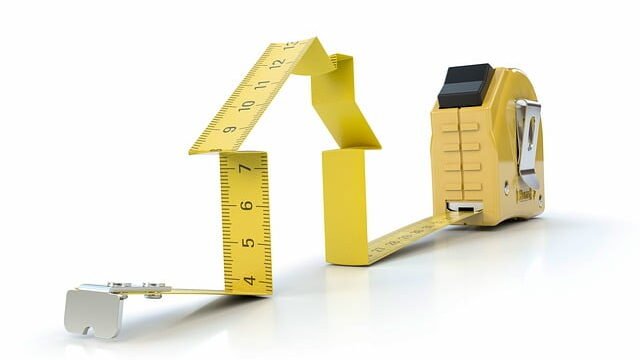
BRRRR is a way to invest in real estate. First, you buy a property that needs work. Then, you fix it up to make it worth more money. Next, you rent it out to people. After that, you get a new loan to pay back the money you spent on the property. Finally, you do it all over again with a new property. The idea is to make money and build a good real estate portfolio.
Here’s a breakdown of each step of the BRRRR process:
- Buy: The first step is to find a distressed property that can be purchased at a discounted price. This can involve searching for foreclosures, short sales, or properties that are in need of major repairs.
- Rehab: After purchasing the property, the next step is to renovate and improve it to increase its value. This can involve repairing any damage, updating the property’s amenities, and enhancing its curb appeal.
- Rent: Once the property is renovated, the next step is to find tenants and rent out the property. This generates rental income that can be used to cover the property’s mortgage payments, taxes, and other expenses.
- Refinance: After the property is rented out, the next step is to refinance the property. This involves taking out a new mortgage loan that is based on the property’s new appraised value, which should be higher than the purchase price and renovation costs. The proceeds from the refinancing can be used to recover the initial investment in the property.
- Repeat: With the initial investment recovered, the final step is to repeat the process by finding another distressed property, renovating it, renting it out, and refinancing it. This allows the investor to build a portfolio of profitable rental properties over time.
90. Turnkey Real Estate Investing

Turnkey investing is a way to invest in real estate without having to do any work. You buy a property that has already been fixed up and rented out by a turnkey provider. They take care of everything, including renovations, finding tenants, and managing the property. This makes it a great option for investors who want a low-maintenance investment.
Here are some of the key features of turnkey investing:
- Low Barrier to Entry: Turnkey investing can be an attractive option for investors who are looking for a low barrier to entry into the real estate market. Because the provider takes care of all the work involved in getting the property ready for rental, investors don’t need to have any experience or knowledge of real estate investing.
- Passive Income: Turnkey investing is a passive income strategy that can generate cash flow from rental income without requiring the investor to be actively involved in property management.
- Low Risk: Because the turnkey provider handles all aspects of the renovation, property management, and tenant placement, investors can avoid many of the risks associated with real estate investing, such as unexpected repairs or vacancies.
- Limited Control: While turnkey investing can be a hands-off investment option, it also means that the investor has limited control over the property. The provider makes all the decisions related to renovations, tenant selection, and property management.
- Limited Upside: Turnkey properties are typically purchased at a premium, which means that the potential for appreciation may be limited. Additionally, because the provider handles all aspects of the investment, the investor may not be able to add value to the property through their own efforts.
91. Pre-construction Real Estate Investing

Pre-construction real estate investing means investing in real estate projects before they are built. It is also called “off-plan” investing because investors buy a property that has not been constructed yet.
Pros
Buying property before construction is completed can be a great opportunity to get it at a lower price. Plus, investors may even have a say in how the property is designed and what features it has.
Cons
The property might not be finished on time or may not be as promised. Additionally, there’s a chance that the property market could go down, which could lower the investment’s value.
92. Spec Building

Spec building is a type of real estate investment where a property is built without a buyer or tenant already lined up. The developer creates the building based on their own plans and hopes to find a buyer or tenant after it’s finished.
Spec building is a popular strategy in real estate markets with high demand. Developers are sure that the property will be in high demand once it’s finished. This approach can also be used in areas where there’s a shortage of available property. Developers take a risk that buyers or tenants will pay more for a new, top-quality property.
Pros
There’s a chance to earn a big profit by selling or renting out the property fast and for a good price.
Cons
If the property stays empty or doesn’t sell or rent for the expected price, the developer may lose a lot of money.
93. Passive Real Estate Investing

Passive real estate investing means investing in real estate without managing it yourself. You let professionals handle the properties and make money for you. There are different ways to do this, like using real estate investment trusts (REITs), crowdfunding platforms, or private funds.
Pros
Invest in real estate without the hassle of active investing. Get potential returns and exposure to the market. You can benefit from professional managers and diversify your portfolio.
Cons
Investors may not have much to say in how properties or assets are managed and can’t personalize their investment strategy or make decisions about specific properties. Also, passive real estate investments can be hard to sell quickly and may require a long-term commitment.
94. Active Real Estate Investing

Pros
Active real estate investors can earn higher returns than passive investors by using their knowledge to find undervalued properties, negotiate better deals, and improve property operations to increase rental income and property value.
Cons
To be an active investor in real estate, you need to know a lot about investing, managing properties, and analyzing the market. It takes a lot of time and effort, and there are risks like property damage, tenant problems, and changes in the market.
95. Value-Add Real Estate Investing

Value-add real estate investing is a strategy where you buy a property that needs improvement or renovation to increase its value and generate a higher return on investment. The aim is to find properties that can be improved through upgrades, repositioning, or other changes to increase their income potential or market value.
Value-add investments involve investing capital to improve a property, which can range from small cosmetic upgrades to major renovations. The aim is to increase the property’s income potential or market value, resulting in a higher return on investment.
To be a successful value-add investor, you need to find properties that can be improved, figure out how much it will cost and the risks involved, and come up with a plan to increase the property’s value quickly and efficiently.
Pros
Value-add investing is a good strategy for investors who want to take some risks to get better returns.
Cons
You need to be highly skilled and experienced in real estate markets and investment strategies.
96. Cash Flow Real Estate Investing

Cash flow investing is a strategy in real estate that aims to generate regular income from renting out properties. The objective is to acquire properties that can produce enough rental income to cover expenses, pay off debts, and provide a steady source of passive income for the investor.
There are different types of investments that generate cash flow, such as renting out single-family homes, apartment buildings, commercial properties, and vacation rentals. The important thing is to find properties that can bring in more rental income than what you spend on buying and maintaining them.
To be a successful cash flow investor, you need to find properties that will bring in steady rental income and manage them well to make the most money possible.
Pros
Cash flow investing is a common strategy used by real estate investors who seek a steady and passive income from their investments.
Cons
Executing a cash flow investing strategy successfully can be challenging because it involves analyzing potential rental income, operating expenses, and the local rental market.
97. Appreciation Real Estate Investing

Appreciation investing is a strategy that aims to profit from the increasing value of a property over time. It involves buying a property that is likely to appreciate due to market trends, changes in demographics, or planned improvements in the area.
Appreciation investing can be done with various types of properties, such as homes, commercial properties, or undeveloped land. The idea is to find properties that are expected to go up in value due to factors such as increased demand, limited supply, or improvements to the surrounding area.
Pros
Appreciation investing is a good strategy for investors who can identify properties with potential for strong appreciation and are willing to take a long-term approach.
Cons
Appreciation investing is not an easy strategy as it involves analyzing market trends, demographics, and other factors that affect property values. It also requires patience since it can take several years for a property to appreciate significantly.
98. Portfolio Diversification

Portfolio real estate diversification involves investing in different types of real estate assets to reduce overall risk and increase potential returns. It’s like general portfolio diversification, but for real estate investments.
To diversify their real estate investments, investors can invest in different types of assets like residential, commercial, industrial, and mixed-use properties. Each type of property has its own risks and benefits. By investing in a mix of property types, investors can reduce their risk across various sectors.
Investors can also diversify by investing in different regions or markets. This includes investing in properties in different cities, states, or countries. By doing this, investors can lower their exposure to any one particular market or region.
REITs are a way to diversify real estate investments. They’re companies that own and manage properties that generate income, and they allow investors to invest in a variety of real estate assets. REITs invest in different types of properties and regions, giving investors exposure to a wide range of real estate investments.
What is Real Estate Investing
Quite simply, I have defined real estate investing to be any type to investing related to real estate. This is why I have included alternative investing strategies like Water Rights.
The ultimate intent of real estate investing is to make money.
Summary
If you’re interested in real estate investing, there are a variety of strategies available to you. Some require a significant amount of capital, while others can be done with little to no money. Additionally, some strategies involve partnering with others to achieve your goals.
Disclosure: I may receive affiliate compensation for some of the links at no cost to you if you decide to purchase a paid plan. This site is not intending to provide financial advice. This is for entertainment and information only.
Check out the eBook or Paperbook versions

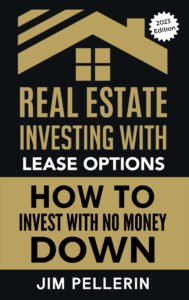





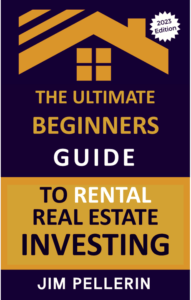









2 Comments